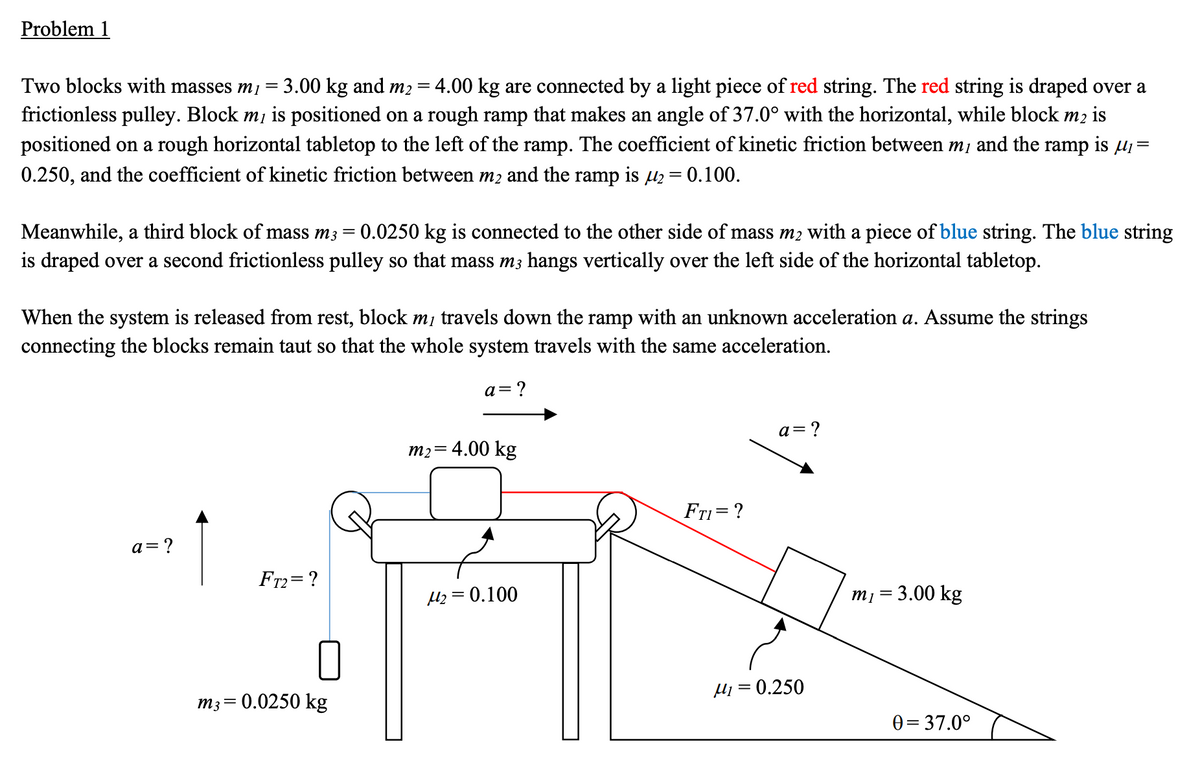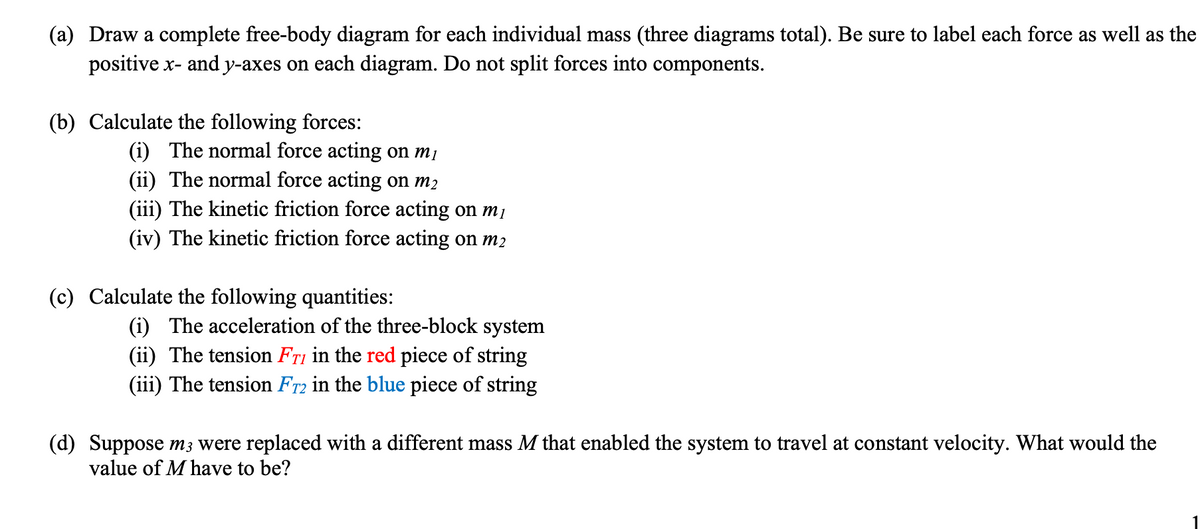Two blocks with masses m1 = 3.00 kg and m2 = 4.00 kg are connected by a light piece of red string. The red string is draped over a frictionless pulley. Block mị is positioned on a rough ramp that makes an angle of 37.0° with the horizontal, while block m2 is positioned on a rough horizontal tabletop to the left of the ramp. The coefficient of kinetic friction between m, and the ramp 0.250, and the coefficient of kinetic friction between m2 and the ramp is µ2= 0.100. is Meanwhile, a third block of mass m3= 0.0250 kg is connected to the other side of mass m2 with a piece of blue string. The blue string is draped over a second frictionless pulley so that mass m3 hangs vertically over the left side of the horizontal tabletop. When the system is released from rest, block mị travels down the ramp with an unknown acceleration a. Assume the strings connecting the blocks remain taut so that the whole system travels with the same acceleration.
Refraction of Light
Refraction is a change in the direction of light rays when they travel from one medium to another. It is the bending of light when it goes through different media.
Angle of Refraction
Light is considered by many scientists to have dual nature, both particle nature and wave nature. First, Particle nature is one in which we consider a stream of packets of energy called photons. Second, Wave nature is considering light as electromagnetic radiation whereas part of it is perceived by humans. Visible spectrum defined by humans lies in a range of 400 to 700 nm wavelengths.
Index of Refraction of Diamond
Diamond, the world’s hardest naturally occurring material and mineral known, is a solid form of the element carbon. The atoms are arranged in a crystal structure called diamond cubic. They exist in a huge variety of colours. Also, they are one of the best conductors of heat and have a very high melting point.
Please see question in the photo? You can just do part B. First image is the description of the question. Thank you!


Trending now
This is a popular solution!
Step by step
Solved in 2 steps




